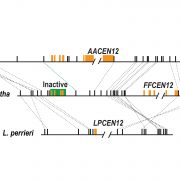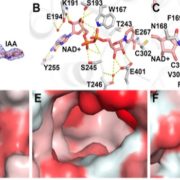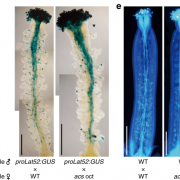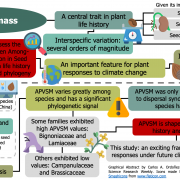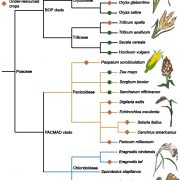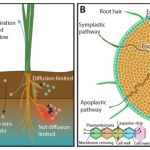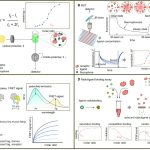Review: Evolution of plant hormone response pathways ($) (Annu. Rev. Plant Biol.)
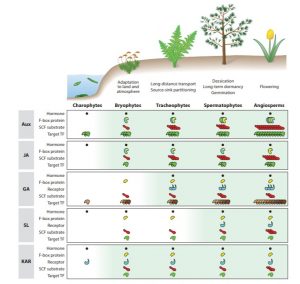 Spatio-temporal action of hormones is essential for proper growth and development of plants. In this review, Blázquez et al. discuss the evolution of the shared features of signaling pathways of different plant hormones. Auxin, jasmonic acid, gibberellic acid, and strigolactone signaling pathways commonly include proteasome degradation of regulators by Skp1/Cullin/F-box (SCF)- type E3 ubiquitin ligase complexes. The degradation of the regulator allows the linked transcriptional factor to promote transcription of hormone-responsive genes, which is another shared strategy in the signaling cascade. The third common mechanism is the binding of the co-repressor TOPLESS (TPL). High throughput sequencing and large-scale data such as OneKp have provided detailed knowledge of the evolution of these signaling components beyond the model angiosperms. The authors discuss the known information about these regulators and their evolutionarily conserved roles and divergences. Understanding the relationship between the different components in hormone signaling will provide insight on signaling pathways as well as their roles in plant development. (Summary by Suresh Damodaran) Annu. Rev. Plant Biol. 10.1146/annurev-arplant-050718-100309
Spatio-temporal action of hormones is essential for proper growth and development of plants. In this review, Blázquez et al. discuss the evolution of the shared features of signaling pathways of different plant hormones. Auxin, jasmonic acid, gibberellic acid, and strigolactone signaling pathways commonly include proteasome degradation of regulators by Skp1/Cullin/F-box (SCF)- type E3 ubiquitin ligase complexes. The degradation of the regulator allows the linked transcriptional factor to promote transcription of hormone-responsive genes, which is another shared strategy in the signaling cascade. The third common mechanism is the binding of the co-repressor TOPLESS (TPL). High throughput sequencing and large-scale data such as OneKp have provided detailed knowledge of the evolution of these signaling components beyond the model angiosperms. The authors discuss the known information about these regulators and their evolutionarily conserved roles and divergences. Understanding the relationship between the different components in hormone signaling will provide insight on signaling pathways as well as their roles in plant development. (Summary by Suresh Damodaran) Annu. Rev. Plant Biol. 10.1146/annurev-arplant-050718-100309



